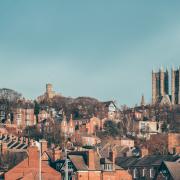Discover the too-often forgotten people and events from the past that have shaped one of North Yorkshire’s oldest market towns

If you like to revel in some fascinating Yorkshire history then look no further than Thirsk in North Yorkshire. Forget historic honeypots such as York and Leeds for a moment as well as the abbeys and castles that grace our region and instead head up the A1 to this market town where there is much more to talk about than horse racing and the revered veterinarian James Herriot.
Push from your mind as you cross the medieval cobbled market square, the busy shops, stalls and straining car engines and consider that probably not far from where you are standing William de Mowbray would have walked, one of the 25 barons who gathered to draw up the Magna Carta in 1215. William de Mowbray was a descendant of Baron d’Aubigny who came over with Duke William of Normandy in 1066. One of the de Mowbray estates was in Thirsk. The surrounding area bears his name as the Vale of Mowbray.
Thirsk marked the 800th anniversary of the signing of the Magna Carta earlier this year with a series of events including a fund-raising medieval festival hosted by Thirsk Rotary at Thirsk Racecourse with knights from re-enactment group Historia Normannis, falcons, minstrels, jugglers, story tellers, coin making and archery. A copy of the Charter was presented to the town by the Lord Lieutenant of North Yorkshire, Barry Dodd and accepted by the then Mayor Janet Watson, to mark Thirsk’s direct link with the Magna Carta. The copy is one of four of the 1215 version of Magna Carta reproduced with permission of the British Library. It is printed on sheepskin parchment by the firm of William Cowley in Buckinghamshire, believed to be the only commercial manufacturer of genuine sheepskin parchment in the UK.
‘The festival was brilliant,’ said David Tucker, writer and retired solicitor who helped to co-ordinate the event. ‘The re-enactors were marvellous and there was a display of birds of prey as well as the playing of late medieval music. There is so much history to discover in Thirsk, I don’t think people really realise just how much.
‘For example there’s a pre-historic burial mound where a 7ft human skeleton was found. Thirsk had a castle which was unfortunately destroyed and the town was at the forefront of the development of agricultural machinery.
‘And Thomas Lord, founder of Lord’s Cricket Ground was born here as was the surgeon Thomas Eshelby who amputated Lord Nelson’s right arm when he was wounded landing at Santa Cruz.’
Work has been going on to get Thirsk’s historic worth out to the public with a series of walks around buildings and sites which help to build a picture of major events that have changed lives and shaped the town. Thirsk Museum www.thirskmuseum.org is a mine of entertaining stories about places and people from the past. Meet, for example, Thomas Busby who murdered his father-in-law in 1702. His ghost was thought to haunt the Busby Stoop Inn (it closed in 2012) at the crossroads where he was gibbeted for his crimes. A chair at the inn gained a sinister reputation linked with fatal accidents which befell anyone who sat in it. The chair now hangs in the museum kitchen, well out of harm’s way.
Historic Thirsk
Thirsk was called Tresche in the Domesday Book but the name we know now is believed to have derived from two ancient words tre and isk, meaning a town and river
There’s been a weekly market in Thirsk since 1145
In 1580 draper Bartholomew Smith ran a stall in the market place and founded a business that continued for 400 years
Thirsk Clock Tower was erected in 1896 to commemorate the marriage between the Duke of York and Princess May of Teck, later to become King George V and Queen Mary
Thirsk Museum was the house where famous cricketer Thomas Lord was born. Lord travelled to London where he founded Lord’s Cricket ground, home of the MCC (the team he played for most often)
Thirsk was also the home of John Gilbert Baker (1834-1920), a famous botanist, author of Flora of North Yorkshire and keeper of the herbarium Kew Gardens. A blue plaque in Baker’s Alley, near the main square, commemorates his house which once stood on the site.
In 2005, Thirsk Racecourse celebrated 150 years of racing on the course at Station Road in Thirsk. This has been continuous apart from periods around the two World Wars.
Famous son and veterinarian Alf Wight better known as author James Herriot is celebrated at the World James Herriot Museum in Mr Wight’s original home and surgery, in Thirsk



























